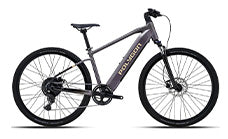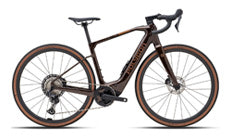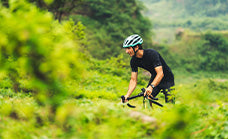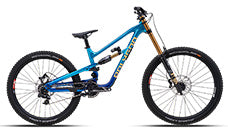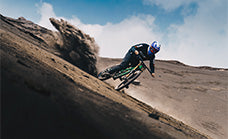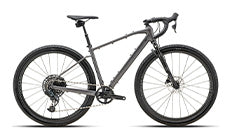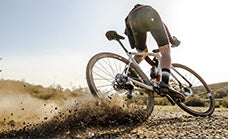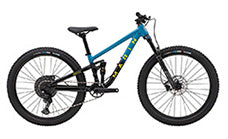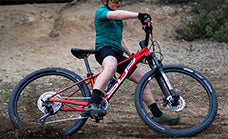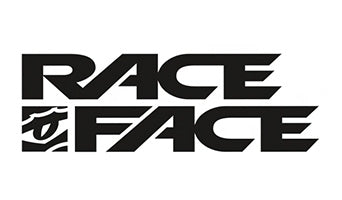Safety Tips for Young Balance Bike Riders
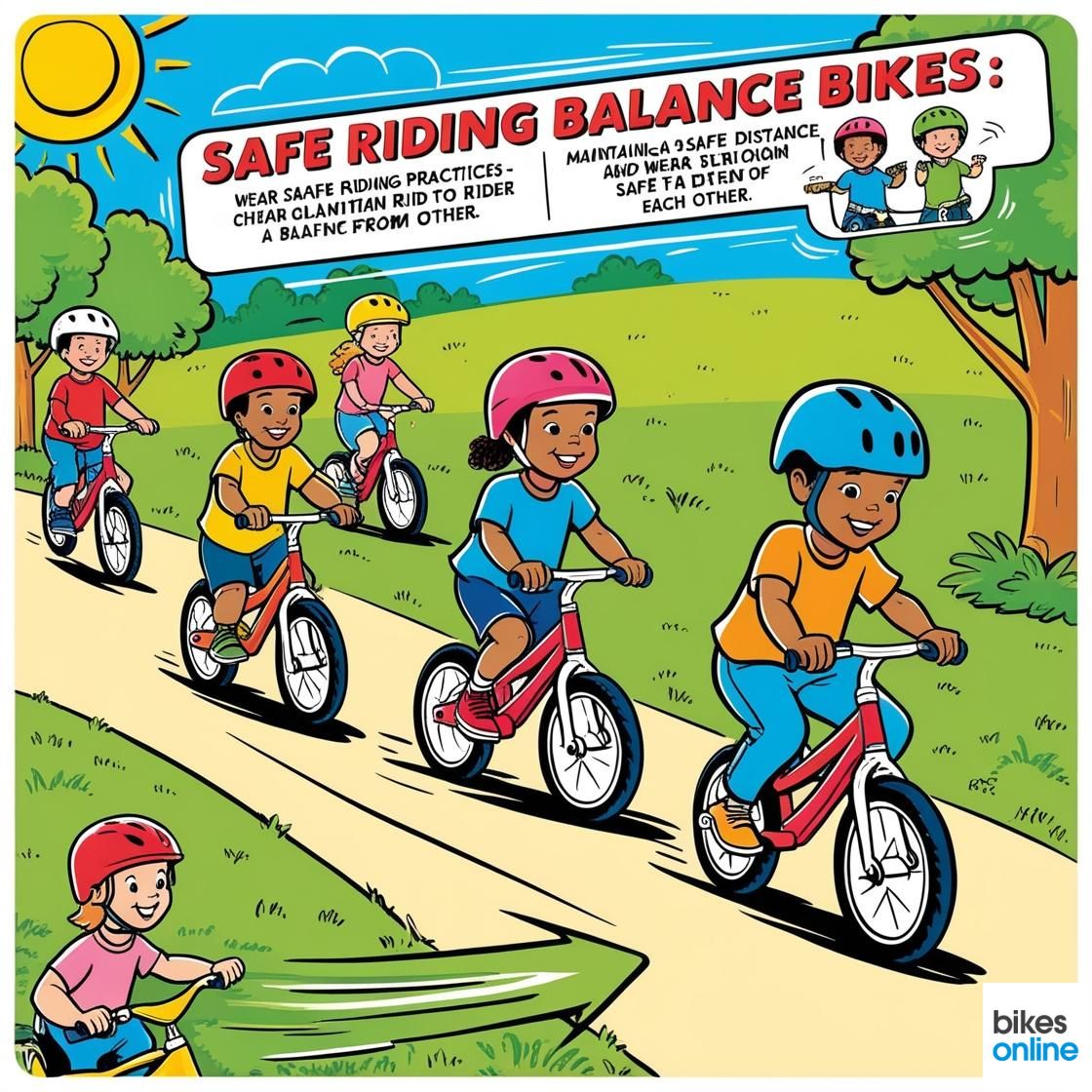
A balance bike, often a child's first encounter with cycling, does away with pedals and complex mechanics to focus on the fundamental skill of balancing on two wheels. These bikes have surged in popularity across Australia, not just for their simplicity but for the freedom and confidence they instill in young riders. As children from as young as 18 months take to parks and pathways with their gleaming new bikes, the importance of prioritising safety cannot be overstated. Ensuring your little one is equipped with the right knowledge and protective gear can transform their riding experience from mere play to a valuable learning adventure in safety and skill. In this guide, we'll explore essential safety tips every parent and child should know to keep the rides enjoyable and, most importantly, safe.
Understanding the Basics of Balance Bikes
What is a Balance Bike?
A balance bike is a pedal-less, chain-less bicycle designed specifically for young children. By simplifying the structure, these bikes remove the complexity of pedalling and allow children to focus solely on one key skill: balancing. The design typically features a lightweight frame, an adjustable seat, and two wheels, all tailored to fit small riders. The absence of pedals means that children propel themselves by pushing off the ground with their feet, a natural motion they are already familiar with from walking and running.
The primary purpose of a balance bike is to teach children the fundamental skill of balancing on two wheels without the distractions and complications of pedalling. This focus on balance first helps in building a strong foundation for cycling, making the transition to standard pedal bikes smoother and often quicker. Children gain confidence as they learn to steer and balance at their own pace, developing both physical coordination and spatial awareness in a safe, controlled manner.
Benefits of Starting with a Balance Bike
Balance bikes are not just a popular trend; they offer significant developmental benefits for young children. Here’s how these innovative bikes aid in early childhood development:
- Enhancement of Motor Skills: Riding a balance bike requires the coordination of multiple physical movements. As children steer, balance, and propel the bike forward using their legs, they are actively developing their gross motor skills. These skills are crucial for overall physical agility and coordination.
- Boost in Confidence and Independence: The simplicity of balance bikes allows children to master balancing at their own pace, which builds their confidence. As they achieve new milestones, such as gliding longer distances or steering through obstacles, they not only enjoy a sense of achievement but also develop a spirit of independence.
- Preparation for Pedal Bikes: Children who start out on balance bikes generally transition to pedal bikes more smoothly and at an earlier age. They tend to learn pedalling quickly because they have already mastered the harder part—balancing. This skip in the need for training wheels moves their cycling journey forward with less fear and more enthusiasm.
- Safety Awareness: Starting with a balance bike also encourages a natural progression in learning how to handle a bike safely. Children learn to judge distance and speed, understand the mechanics of stopping, and navigate safely around obstacles, which are essential skills for all future biking activities.
- Physical Activity and Outdoor Play: In an age of digital distractions, balance bikes get children outdoors and active. This not only improves their physical health by enhancing cardiovascular fitness but also contributes to better mental health and social skills as they interact with peers in outdoor settings.
Essential Safety Gear for Balance Bike Riders
The Right Helmet: A Must-Have
When it comes to cycling, whether it's on a balance bike or a traditional bicycle, the importance of a helmet cannot be overstated. For young riders, a well-fitting helmet is the first line of defense against head injuries, which can be serious even at low speeds or in seemingly safe environments.
Choosing the Right Helmet: It’s essential that the helmet fits snugly and sits squarely on the head. A helmet should sit on top of the head in a level position, and should not rock forward and backward or side to side. The straps must always be buckled, but not too tightly—just enough to fit two fingers between the chin and the strap.
Standards Compliance: In Australia, helmets must meet specific safety standards that ensure adequate protection. The AS/NZS 2063:2008 standard, for example, sets the requirements for impact protection, strap system strength, durability, and coverage. Parents should ensure any helmet purchased adheres to these standards to provide maximum protection.
Regular Checks and Replacement: Helmets should be checked regularly for any signs of wear and tear, and it's crucial to replace them after any kind of significant impact, even if no visible damage is apparent. Additionally, as children grow, their helmet size will need to be adjusted or replaced to ensure a proper fit continues.
Safety is a paramount concern, and starting with the correct helmet not only protects the child but also instills good cycling habits from an early age. A helmet isn’t just a piece of safety equipment; it’s an essential part of the cycling experience that ensures young riders can enjoy their balance bike adventures safely.
Additional Protective Gear
While a helmet is the most crucial piece of safety equipment for young riders on balance bikes, other protective gear also plays a significant role in ensuring a child's safety. Here’s what else should be considered:
Knee and Elbow Pads: These pads serve as essential barriers between a child’s skin and the ground, providing protection from scrapes and bruises that are common when learning to ride. Knee and elbow pads should fit snugly without restricting movement, ensuring they provide protection without discomfort. They're especially important when children are riding on harder surfaces or in areas where they might encounter rougher terrain.
Wrist Guards: For the more adventurous rider who might be pushing their limits, wrist guards can prevent sprains and fractures by supporting and shielding the wrist during falls. These are particularly recommended for use in skate parks or on any rougher surfaces.
Closed Shoes: Footwear is often overlooked when preparing a child for riding. Closed shoes are vital in protecting little feet not just from the bike's moving parts but also from any objects on the ground. They provide better grip on the bike's surfaces, making it easier to push off and stop, which enhances overall safety.
Gloves: Though not always considered essential, gloves can provide both grip and protection. They help in maintaining control of the handlebars and protect small hands from scrapes in case of a fall or from rubbing against rough surfaces.
Bright, Reflective Clothing: To enhance visibility, especially if children ride in areas where there are other bikers or vehicles, wearing bright and reflective clothing can make a significant difference. It helps in making sure that young riders are seen, adding an extra layer of safety during dusk or in poorly lit areas.
Ensuring that a child is well-equipped with the right safety gear not only minimizes the risk of injuries but also boosts the child’s confidence as they learn to ride. Parents should consider all these elements to create a safe and enjoyable riding experience for their little ones.
Choosing the Right Environment for Practice
Safe Locations for Riding
Selecting the right environment for young riders to practice is as crucial as equipping them with the right bike and safety gear. The ideal location not only supports their learning curve but also ensures their safety. Here are some of the best places for children to ride their balance bikes:
Parks with Paved Pathways: Parks are typically the go-to option for balance bike practice because they offer safe, contained environments away from traffic. Look for parks that have smooth, paved pathways, which are ideal for balance bikes. These paths allow children to ride freely and safely, away from uneven surfaces that could cause falls.
Designated Bike Paths: Many communities offer designated bike paths that are separated from both pedestrian paths and road traffic. These paths are excellent for children to practice longer rides and are generally flat and well-maintained, providing a safe riding experience.
Closed Traffic School Areas: Some areas have traffic schools or closed courses designed for educational purposes, where children can learn in an environment that mimics real roads but without the dangers. These areas are great for teaching children about road safety and bike handling in a controlled setting.
Quiet Cul-de-Sacs and Dead-End Streets: If a park or designated bike path isn't available, a quiet cul-de-sac or a dead-end street can also be a good alternative. Ensure these areas have low traffic and are away from main roads to safely allow children to practice riding.
Flat, Grass Fields: For very young or first-time riders, a flat, grassy field can be an excellent place for practice. The soft ground can cushion falls, making the learning process a bit less daunting and more comfortable for children.
When choosing a location, it’s essential to consider the level of the child's riding ability and confidence. As they progress, varying the terrain can help them become more adept at handling their balance bike in different conditions. Always ensure the chosen practice area is free from hazards such as potholes, busy intersections, and steep inclines.
Hazards to Avoid
While balance bikes are an excellent tool for children to learn cycling, certain outdoor hazards can pose risks to young riders. Awareness and avoidance of these hazards can significantly enhance the safety of their riding experience. Here are some common hazards that parents and guardians should be mindful of when choosing a riding location for balance bike learners:
Slopes and Steep Inclines: Even gentle slopes can be challenging for children on balance bikes, particularly for beginners who are still mastering the art of balancing and braking. Steep inclines can increase the speed of the bike unexpectedly, making it difficult for young riders to control their descent and stop safely.
Uneven Terrain and Loose Surfaces: Areas with gravel, sand, or lots of debris can be tricky for balance bikes, which typically have smaller wheels that are not suited for rough terrain. Uneven surfaces such as holes, large cracks, and bumps can also cause sudden jolts, potentially leading to falls.
Crowded Areas: Places that attract large crowds, such as busy parks, festivals, or events, can be hazardous for young cyclists. The unpredictability of moving crowds and the presence of other cyclists, pets, and distractions can overwhelm a child, increasing the risk of accidents.
Near Water Bodies: Areas adjacent to ponds, lakes, or rivers should be avoided unless fully barricaded. Young children can easily lose control and veer towards water bodies, which poses a significant safety risk.
Close Proximity to Road Traffic: Even if a pathway is designated for bikes, any area that is near active road traffic can be dangerous due to the risk of a child accidentally straying too close to the road. Always choose locations well away from vehicles and ensure a physical barrier if possible.
Obstructed Views: Areas with poor visibility due to curves, hills, or thick foliage can make it difficult for parents to maintain visual contact with their child. It’s important to choose open areas where children can be easily supervised at all times.
By being aware of these common hazards and actively avoiding them, parents can provide a safer environment for their children to enjoy riding their balance bikes. It’s always better to err on the side of caution and choose the safest possible locations for bike riding practice.
Teaching Basic Riding Skills
Mastering Balance and Steering
Teaching a child to master balance and steering on a balance bike is a rewarding process that involves patience and practice. Here are some effective tips on how parents can guide their children to develop these crucial skills:
Start on Flat, Smooth Surfaces: Begin teaching your child in a safe, flat area free from traffic and obstacles. This minimizes distractions and makes it easier for the child to focus on balancing rather than navigating uneven terrain.
Adjust the Bike to Fit: Ensure the balance bike is properly adjusted to the child's height. The seat should be set so that the child can sit with both feet flat on the ground, allowing them to push off effectively. This position maximizes stability and control while learning to balance.
Encourage Walking the Bike First: Before trying to balance, have the child walk with the bike between their legs. This helps them get used to the weight and feel of the bike without the added challenge of balancing right away.
Practice Gliding: Once comfortable with walking the bike, encourage your child to sit on the seat and lift their feet off the ground, using their momentum to glide. Start with short glides and gradually increase the distance as their confidence grows.
Use Gentle Slopes to Advance Skills: As your child becomes more confident with gliding on flat surfaces, introduce very gentle slopes. This helps them learn to control their speed and balance without the need for constant foot contact with the ground.
Teach Steering with Small Turns: Introduce steering by asking your child to make small turns. Teach them to look in the direction they want to go, steering gently towards it. This helps build the coordination between steering and looking ahead, which is critical for safe cycling.
Set Up Simple Obstacle Courses: As skills advance, set up a simple obstacle course with cones or similar objects. This encourages children to practice steering and balancing as they navigate through the course, enhancing both their motor skills and their ability to anticipate and react.
Positive Reinforcement: Throughout the learning process, use lots of encouragement and positive reinforcement. Celebrate small successes and provide gentle guidance when challenges arise.
By following these steps, parents can effectively support their children in mastering balance and steering, foundational skills for any type of cycling. These experiences not only build physical skills but also confidence and a sense of achievement.
Learning to Stop
Teaching young riders how to stop safely is a crucial part of their learning process on a balance bike. Stopping efficiently and safely helps prevent accidents and builds confidence in young cyclists. Here are some effective techniques parents can use to teach this vital skill:
Introduce the Concept of Braking Early: Start by explaining the importance of stopping and what braking feels like. You can demonstrate by gently pulling them to a stop while they're on the bike to help them feel the motion.
Use Feet First: Since balance bikes typically don't have pedals, children will use their feet to stop. Encourage your child to practice using their feet to brake by pressing their heels down gently on the ground until they come to a stop. This method is intuitive and reinforces the natural tendency to use their feet for balance and control.
Practice in a Safe Environment: Choose a flat, open, and soft area like grass for initial brake practice. This reduces the impact if they fall and makes the learning process less intimidating.
Teach Controlled Braking: Teach your child to brake gradually, rather than abruptly, which can cause them to lose balance and fall. They should learn to feel how different amounts of pressure on the ground slow them down at different rates.
Progress to a Brake System: If the balance bike is equipped with brakes, teach your child how to use them once they are comfortable with stopping using their feet. Start with the rear brake, as it is safer and provides more control. Explain how squeezing the brake lever will slow the bike down and practice this action while walking beside the bike before riding.
Stop and Start Games: Incorporate games that involve starting and stopping on command. This not only makes the practice fun but also ingrains the stop-start mechanism into their muscle memory.
Regular Practice: Regular practice is key to mastering safe stopping. Encourage your child to practice stopping as part of their regular riding routine, increasing their proficiency and confidence.
Emergency Stops: Once they have mastered regular stopping, teach them how to perform emergency stops safely. This involves braking firmly and quickly while maintaining balance as much as possible.
By teaching young riders these stopping techniques, parents ensure that their children can handle their balance bikes safely in various situations, making riding a more enjoyable and secure experience for everyone involved.
Supervision and Support
The Role of Active Supervision
Active supervision is a cornerstone of ensuring safety and fostering a positive learning environment for young children as they explore the world on their balance bikes. Here’s why constant parental supervision and engagement are critical:
Preventing Accidents: Active supervision means being physically present and attentive while your child rides their balance bike. This enables parents to anticipate potential dangers, intervene when necessary, and prevent accidents before they occur. Immediate proximity allows for quick action, such as catching a child before a fall or steering them away from unexpected hazards.
Guidance and Instruction: Supervision isn’t just about watching; it’s about participating in the learning process. Parents can provide ongoing guidance and correction, helping children refine their skills in real-time. From adjusting their posture to offering tips on how to navigate different terrains, parental input is invaluable in enhancing the child’s riding proficiency and safety.
Building Confidence: When children know that a trusted adult is nearby to help them if they fall or struggle, they are more likely to take risks and try new things. This security blanket of sorts allows children to push their boundaries in a safe manner, which is essential for their growth and confidence on the bike.
Teaching Road and Cycle Safety: Active supervision also presents opportunities to teach children about road and cycle safety. Parents can discuss the rules of the road, the importance of staying alert, and how to be considerate of other park or path users, instilling good habits that will last a lifetime.
Emotional Support: Learning to ride can be a mix of exhilaration and frustration for young riders. A parent’s presence provides emotional support and encouragement, which can help keep the experience positive. Celebrating achievements, no matter how small, and offering comfort after setbacks, reinforces a child’s effort and perseverance.
Ensuring Proper Use of Safety Gear: Supervisors can also ensure that safety gear is used properly and consistently. Checking that helmets are worn correctly, straps are secure, and that all protective gear is in good condition, is easier when parents are closely involved.
Active supervision is more than just a safety measure; it’s an essential part of the learning process, offering security, education, and encouragement. It allows children to explore and enjoy cycling while ensuring they do so in the safest possible way.
Encouraging Safe Riding Habits
Instilling a culture of safety from the outset is crucial for young riders. Parents can play a significant role in fostering safe riding habits that children will carry with them throughout their lives. Here are some effective strategies for encouraging safe riding practices:
Set Clear Ground Rules: Before your child begins riding, establish clear, simple rules that are easy for them to understand and follow. These might include where they can ride, how fast they can go, using safety gear at all times, and the importance of staying within designated areas. Consistency is key, so ensure these rules are enforced every time they ride.
Lead by Example: Children often emulate the behaviours of their parents. If they see you wearing a helmet and adhering to safety norms while cycling, they are more likely to adopt these behaviours themselves. Make a point of demonstrating safe practices whenever you're on a bike or interacting with traffic.
Teach the Importance of Regular Bike Checks: Involve your child in pre-ride checks by showing them how to inspect their balance bike. Teach them to check the tire pressure, ensure the brakes work (if applicable), and verify that all parts are secure. This not only teaches responsibility but also ingrains the habit of ensuring their equipment is safe before use.
Create a Routine: Integrating safety checks and gear preparation into a routine before every ride helps reinforce these habits. Over time, this routine will become second nature to your child.
Use Positive Reinforcement: Celebrate when your child follows safety rules and practices safe behaviour. Positive reinforcement can be more effective than reprimands. Reward them with verbal praise, stickers, or additional playtime when they show they can be trusted to ride safely.
Discuss the Consequences: While it’s important not to scare children unnecessarily, it’s equally crucial that they understand why rules are in place. Explain the potential consequences of unsafe riding in a way that’s appropriate for their age. This might involve discussing how falling could result in injuries or how staying close ensures they don’t get lost.
Encourage Open Communication: Let your child know that they can always come to you with questions or concerns about riding their bike. If they’re worried about a particular aspect of riding, discussing it openly can help alleviate their fears and provide them with reassurances or additional guidance.
Make Safety Fun: Integrate safety lessons into games and challenges. For instance, set up obstacle courses that require them to use specific safety skills, like stopping at a line or navigating turns carefully. Making safety fun encourages children to practice these skills more enthusiastically.
By implementing these strategies, parents can effectively promote safe riding habits among young balance bike riders, providing them with a strong foundation in both safety awareness and cycling proficiency.
Regular Bike Maintenance Checks
Pre-Ride Inspections
Regular maintenance checks are vital for ensuring the safety and longevity of a balance bike. Performing a pre-ride inspection before every outing can prevent accidents and mechanical failures. Here is a straightforward checklist to follow that will help young riders and their parents ensure the bike is in good condition for riding:
Tyre Pressure: Check that the tyres are inflated to the correct pressure. Properly inflated tyres reduce the risk of flats and make riding easier and safer. For balance bikes, which often have solid tyres, ensure they are not excessively worn down.
Brakes (if applicable): For balance bikes equipped with brakes, check that they are functioning correctly. The brake lever should be easy to reach and not too stiff for small hands to operate. The brakes should engage smoothly without sticking or squeaking.
Handlebars and Seat: Make sure the handlebars and seat are securely fastened and adjusted to the correct height. The handlebars should be stable without any wobble, and the seat should be at a height where the child’s feet can comfortably touch the ground.
Frame and Forks: Inspect the frame and forks for any signs of cracks, bends, or rust. Structural integrity is crucial for safe riding, so any damage should be addressed immediately.
Wheels: Check that the wheels are secure and turn freely without noise or resistance. Ensure the axles are tight and the wheels are properly aligned.
Chain or Bearings (if applicable): For models with a chain or bearings, ensure they are well-lubricated and free from rust or dirt buildup. While many balance bikes do not have chains, those that do require regular checks to ensure they are not loose or snagging.
Nuts and Bolts: Go over the bike and tighten any loose nuts and bolts. These can loosen over time with regular use, so checking them regularly is essential for maintaining the bike’s stability and functionality.
Safety Gear: Finally, verify that all safety gear, including helmets and any other protective padding, is in good condition, fits well, and meets safety standards.
Encouraging young riders to participate in these pre-ride inspections not only teaches them about the mechanics of their bike but also instills a sense of responsibility and the importance of regular maintenance. By making this a routine part of their cycling preparation, children learn to appreciate and take care of their equipment, ensuring many hours of safe and enjoyable riding.
When to Seek Professional Maintenance
While routine pre-ride checks can be conducted at home, there are times when a balance bike may require professional attention. Recognizing the signs that indicate the need for a more thorough inspection or repair can prevent further damage and ensure the safety of young riders. Here are some indicators that it's time to seek professional maintenance:
Persistent Issues with Brakes: If the brakes continue to stick, squeak, or fail to stop the bike effectively even after home adjustments, it's time to have them checked by a professional. This ensures they are correctly configured and safe to use.
Signs of Structural Damage: Any visible cracks, deep scratches, or bends in the bike's frame or forks should be professionally assessed. These could compromise the bike's structural integrity and safety.
Difficulty with Steering: If the handlebars seem loose or misaligned repeatedly and cannot be fixed easily at home, professional help may be needed to ensure they are properly fitted and secure.
Wheel Problems: Wheels that wobble, have damaged spokes, or fail to rotate smoothly might need more than just a simple tightening; a professional can provide wheel realignment or part replacement as needed.
Unusual Noises: Any persistent rattling or knocking sounds from the bike can indicate loose parts or internal issues, which should be professionally diagnosed to prevent accidents.
Conclusion
Ensuring the safety of balance bikes through regular maintenance and responsible riding practices is crucial. This article has outlined essential safety tips, from wearing the right gear to performing regular pre-ride checks and understanding when to seek professional maintenance. It is vital for parents to be proactive in overseeing these aspects, not only to safeguard their children but also to instill lifelong habits of responsibility and care.
Encouraging safe riding habits and providing the right supervision can significantly enhance the benefits that come with learning to ride a balance bike, such as improved balance, coordination, and confidence. Parents should actively participate in their child’s cycling journey, ensuring it is as safe as it is enjoyable. Embrace these moments of growth and discovery, and watch as your child develops not just riding skills but also a sense of independence and self-assurance.


